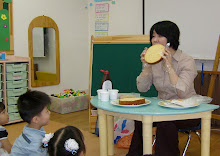Writing tasks have become a part of my life since I became a graduate student. When I tried to write my first assignment in TESOL mall, I recognized that I did not know how to write and, of course I could not understand texts either. Then I just summarized and copied some of original articles. However, after understanding the term of plagiarism, I tried to avoid plagiarism by paraphrasing. Since then, I always try to think how to paraphrase the original text into my writing. Because as a writer I would like to express my own voice, I focus on understanding of the text.
After reading Swales& Feak (1994)’s article, I realized that “writers need to understand their audiences’ expectations and prior knowledge to be successful in their writing” (p.7). As a writer, I have never thought my audiences at all because I have concentrated on me and the author of the reading only. On the contrary, when I talk to somebody, I pay attention to my audiences because they are just in front of my face. But writing is different! I cannot see the audiences face to face and so they are easily neglected. What is a good writer? I thought so far that good writers can express their own voice, but now, I can say that good writers can reflect their voices differently according to their audiences. And I will try to think my audience while writing.
.
In addition, I realized that academic writers should be familiar with internal organization such as Hoey (1983)’s problem-solution (as cited in Swales& Feak, 1994, p.12), and also, our writing should follow academic style using formal nouns, single verbs and useful linking words to have flow(Swales& Feak, 1994). These practical tips are understandable but not easy to apply in writing, especially for me as an EFL learner. However, I will try to keep thinking these writing rules to become a better writer, and hope these practical tips will be applied in my further academic writing step by step!
Swales, J. & Feak, C. B. (1994). An Approach to Academic Writing. Academic writing for graduate students: A course for non-native speakers of English (pp.7-32). Ann Arbor, MI: the University of Michigan Press.


No comments:
Post a Comment